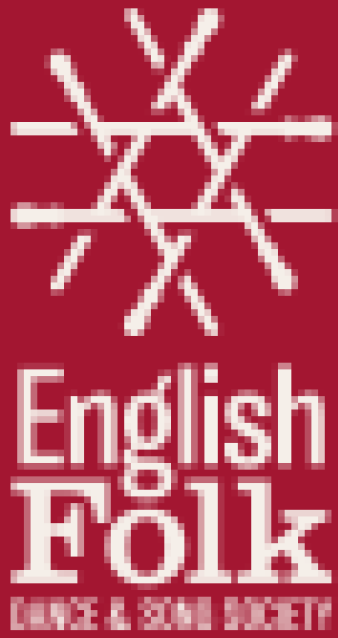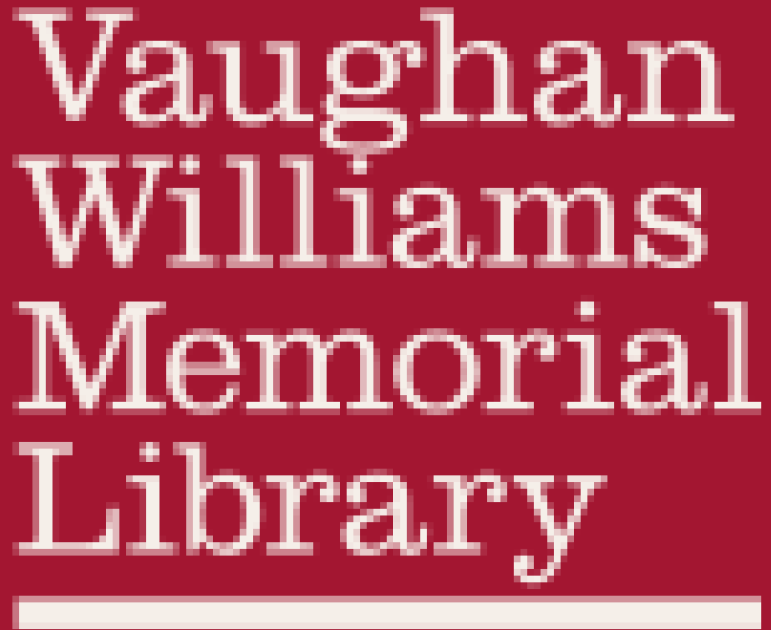Introduction to English Folk Dance
Contents
Introduction
Folk, or traditional dance, refers to a large variety of dance forms which have been performed for entertainment, socialising, or other purposes over the centuries by the labouring classes. Scholarly interest in folk dance developed in the early 20th century, and was spearheaded by Cecil Sharp, Mary Neal, and a handful of other collectors (many of whom were also involved in the early folk song revival). In very simple terms, traditional dance forms can be divided into two categories identified as Display Dance and Social Dance (although some dance forms straddle both categories). This guide will introduce you to the main forms of folk dance, a background of their history, and suitable resources to find out more.
Display dance
Display dance refers to those dances which are performed for the purposes of entertaining an audience, or as part of a calendar custom or folk tradition. It is for this reason that display dances are sometimes referred to as ‘ceremonial’ or ‘ritual dance’ (although this carries other misleading connotations, so we prefer to use ‘display’). Display dances tend to be highly choreographed with complex dance figures and steps, sometimes interspersed with “chorus” figures, and designed for a set number of dancers. The dancers often wear distinctive costumes, and may dance with props such as handkerchiefs, sticks, or swords. The commonest types of display dance are morris dance and sword dance, and these have their own regional variations and styles, but there are also many other unique display dance forms which can be found across the country.
Morris dance
Morris dance is an old dance tradition. The first written record of morris dance dates from 1448 when the word “Morysk Daunce” was used to describe the subject of a wall tapestry listed in an inventory (Heaney, 2002). We do not know what morris dance would have looked like at this time, but in the 16th and 17th centuries there are numerous references to it being performed as part of courtly entertainments and civic processions.
By the time folk collectors of the 19th and 20th century became interested in morris dance, there existed regional variations. Geographical locations are used to identify the main morris styles as they are known today - these are Cotswold morris, North West morris, and Border morris (Welsh Border).
To find out more about how the main types of morris differ in style, see the Beginners Guide to English Folk Dance on the EFDSS Resource Bank.
Morris dance and its revival in the 20th century is closely connected with Cecil Sharp who did much to popularise the dance form. Sharp first took an interest in morris dancing when he saw Headington Quarry Morris Men dancing on boxing day in 1899(?). He was staying at his mother-in-law’s house in Oxfordshire, and immediately dashed out to collect the tunes from their musician, William Kimber.
Later, Sharp introduced William Kimber to Mary Neal. Neal was running a settlement school for disadvantaged young girls, and was looking for suitable recreational activities for them. These girls learned dances from Kimber and began performing them across the country as The Esperance Morris to critical acclaim. Mary Neal published two books of morris dances called The Esperance morris book : a manual of morris dances, folk-songs and singing games in 1910. Neal and Sharp worked closely together for a number of years, but due to a disagreement over performance styles, Sharp eventually formed his own display team and began the English Folk Dance Society. Sharp published five volumes of his Morris Book, with the first published in 1911. Through the Society, the art of morris (along with other folk dance) was taught to a much larger number of people.
Other organisations, such as the Morris Ring, Morris Federation, and Open Morris formed to support and promote morris dance, and in the 1960s and 1970s morris dance underwent a revival. Influential figures such as Roy Dommett and Lionel Bacon did much to raise awareness and teach morris dance, and many new teams (including women’s sides) formed at this time.
Sword dance
The common linked sword dances that we know today are now strongly associated with the North Eastern counties of England. There are two main types of linked sword dance – the longsword dance, commonly performed in Yorkshire with long inflexible swords; and the short sword dance, known as rapper, found in the mining regions of Northumberland and Durham and performed with short flexible strips of metal. The dancers are connected via the “swords” and use these to make knots and patterns, whilst performing intricate steps.
Only a handful of references to sword dancing in England prior to the late 18th century exist, and these descriptions are quite vague. When descriptions do begin to appear in the late 18th century, they tend to describe the dance as being performed around Christmas time alongside other customs/traditions, e.g. house-visiting, the dragging of the fool plough, and the performance of a play or song.
Rapper is most likely a development from the longsword dance, adapted and performed by the coalminers of Tyneside and Durham. The influence of clog dance also led to this dance form adopting intricate stepping with hard-soled shoes.
The first serious attempts at notating sword dance figures were made by Cecil Sharp and George Butterworth between ca. 1907 and 1913, and retaught through the English Folk Dance Society and its display team. Sharp was particularly impressed with the longsword dance, and chose the six-sword lock as the emblem for the English Folk Dance Society.
Social dance
Social dances are the ordinary dances performed at social gatherings, for their own pleasure, available for anyone to join. There are many forms and styles which have been fashionable at different periods over the centuries – country dances, quadrilles, square dances, etc., but they all involve dancing a sequence of figures with a partner in set formation.
Cecil Sharp collected the social dances he found being performed in rural communities of Warwickshire, Derbyshire, Devon, Somerset and Surrey, and published these in his ‘The Country Dance Book’ vol. 1. In later volumes, Sharp turned his attention to the dances published in Playford’s Dancing Master of the 17th and 18th centuries. He considered these dances as being the ancestors of the country dances found in the rural communities, and purer in form. Sharp revised and republished many of Playford’s dances in later volumes of the country dance book.
Playford’s The English Dancing Master was a seminal publication because it was the first major publication in England in which dance notations were published with their associated tunes. First published in 1651, The Dancing Master went through many volumes and editions. At this time, country dancing became a craze, and most well-to-do people engaged the services of a “dancing-master” to learn all the latest and most fashionable dances. Playford’s dances are still popular with social dancers today, and Pat Shaw did much in the 1960s to revitalise them through his interpretations and republishing.
After Cecil Sharp’s death in 1926, Douglas Kennedy became Director of the English Folk Dance Society. Inspired by the square dance boom in America, English country dances adopted the practice of using a caller to explain the dance figures before and during the dance. This made it much easier for newcomers to join in, and so during the 1950s English Social Dance experienced a revival.
Step dance
Straddling display and social dance is step dance. This form of dance does not require a partner, and in simple terms consists of making rhythmic noises through taps and stepping of the feet. In southern and eastern parts of England hard soled shoes are worn and the dance steps somewhat improvised. In this setting, step dance can be seen as a form of social dance, performed for one’s own entertainment and for anyone to join in. But in the north of England, step dances are usually performed in clogs (often referred to as clog dance), and are often considered as a display dance.
Clog dancing is usually associated with the industrial towns and cities of the north, where clogs were worn as practical and hard-waring footwear in factories and coal mines. Some clog steps take their name from the machinery and processes of mill-work, such as the pick, and the two up two down. Dancing in clogs would have been seen performed on the streets, but as the dance found its way into competitions and the Victorian music halls, the routines and stepping became more choreographed and showy. A number of famous Victorian stage performers were accomplished clog dancers, including Dan Leno, Charlie Chaplin, and Stan Laurel.
There are regional styles of all forms of step and clog dance, and the Instep Research team has done much to document the various steps and styles from dancers over the last 30 years or so and make these available through its website.
Further research
The VWML has an index to dances which can help you locate the notation of a dance within a book or film, along with their associated tunes. This index can be searched via the VWML’s website, and allows the user to search on fields such as title, dance type, number of dancers, etc. For more information, see the Search and Browse Tips section of the website. There are also many publications and resources dedicated to the various dance forms which will present you with a useful starting point on the subject.
Morris
Bacon, L., 1974. A handbook of morris dances. Henlow : Morris Ring.
Forrest, J., 1999. The history of morris dancing. Cambridge : James Clarke.
Heaney, M., 1995. An introductory bibliography on morris dancing, 2nd ed. London : VWML.
Neal, M., 1910 - 1912. The Esperance morris book : a manual of morris dances folk-songs and singing games (Part 1 and 2). London : Curwen.
Sharp, C., & MacIlwaine, H., 1991. The morris book : volumes 1-5, 1911 – 1924. Morris Ring.
Sword
Allsop, I., & Barrand, A., 1996. Longsword dances from traditional and manuscript sources. Brattleboro : Northern Harmony.
Corrsin, S. 1993. Sword dancing in Britain : an annotated bibliography based on the holdings of the Vaughan Williams Memorial Library of EFDSS. London : EFDSS.
Corrsin, S. 1997. Sword dancing in Europe : a history. London : Folklore Society.
Heaton., P., 2012. Rapper : the miners’ sword dance of north-east England. London : EFDSS.
Sharp, C., 1911 – 1913. The sword dances of Northern England, books 1-3 : songs and dance airs. London : Novello.
Social Dance
Barlow, J., 1985. The complete country dance tunes from Playford's dancing master (1651-ca.1728). London : Faber Music.
Barclay, L., Jones, I., and Kennedy, D., 2015. Community dances manual : a classic collection of English and American social folk dances and tunes. Revised edition. London : EFDSS.
Sharp, C., 1909-1918. The country dance book, vol. 1-6. London : Novello.
Shuldham-Shaw, P., and Fennessy, M., 2012. Another look at Playford : research into 17th and 18th century English dances. Fennessy.
Step Dance
Metherell, C., 2005. An introductory bibliography on clog and step dance. London : VWML.
Instep Research Team (website).


